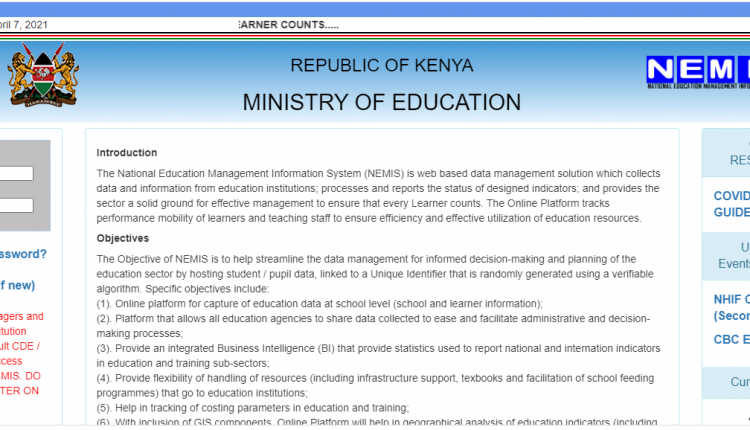Theft of School Funds Via Inflated Enrolment and Ghost Schools Exposed
Last week, a non-existent school was discovered in a parliamentary report and is among four institutions that a publisher was not able to trace in 2018.
This revealed a long-standing corruption scandal that education officials have stolen public funds using ghost schools.
The publisher had been contracted to supply books and reported to the Ministry of Education that they could not trace the four schools in 2018. Their efforts of locating the schools were futile even after contacting the local officials of education.
It has never been revealed whether the issue was dealt with. Also important to note is that the issue only came before the public eye and ears only this month after a parliamentary watchdog exposed how a rogue education official managed to steal money channeled to the fictitious schools.
Among the ghost schools were Mundeku Secondary School, Dol Dol Boys in Laikipia North, Laikipia County (64 students), Belgut Kaptugen Starehe Boys in Belgut sub-county, Kericho Couty (152 students), and Ikonge DEB in Kisii Central, Kisii County (448 students).
The other three schools did not feature in the parliamentary report.
A list given to publishers who supplied books under the Secondary Quality Improvement Program (SEQIP), for instance, was indicated to be having 1,188 students.
The high numbers of enrolment are usually associated with national and a handful of extra-county schools.
Given that the government disburses Sh. 22,244 per learner in secondary school, money that the rogue official could have stolen could have been a lot more.
According to the auditor the figure was at Sh. 27,329,598.95 before the Ministry handed in a lesser figure.
The Ministry’s failure of fully migrating to the National Education Management Information System (NEMIS) has been blamed for the theft of huge chunks of taxpayers’ money lost to corrupt school heads and corrupt officials.
The Public Accounts Committee Report on the Examination of the Auditor-General’s Report on the Financial Statements for the National Government for the Financial Year 2017/2018, reveals the lack of accurate data on learners has caused to loss of money via the manipulation of data.
In one daring case, a former clerical officer at the directorate of education offices in Kakamega County decided to list a non-existent school to receive the government’s disbursement. Through this, the officer planned to steal money from the government.
The report also revealed that another officer had been interdicted for inflating enrolment of 185 schools and this led to the theft of Sh. 269,254,288.
These cases were forwarded to the Ethics and Anti-Corruption Commission (EACC) for investigations. Chair of the Committee, Opiyo Wandayi tabled the report in Parliament last week.
To stop the theft incidences, school principals and headteachers were given a deadline to register all learners in NEMIS.
School administrators utilized loopholes in data management over the years to steal funds from the government.
“The Ministry has been using a computer program that heavily relies on manual input of school data into the program by officers from MoE headquarters to disburse funds to primary schools. This mode of payment has been prone to errors,” said Principal Secretary for Early Learning and Basic Education, Julius Jwan in the circular regarding NEMIS registration.
It is only learners who on NEMIS will receive the government capitation funds.
Issues concerning learners without birth certificates have been addressed as they are now going to be captured.
Some principals have complained over flaws in the system such as challenges in acquiring the information needed in NEMIS and challenges in transferring students since sometimes NEMIS information has to be sought in multiple schools.
“It is not easy acquiring the details we need in NEMIS. Also when a student transfers to your school, sometimes you may have to look for the information in like three schools,” this makes the process quite challenging.
In the Kakamega case, the PAC report shows that the clerical officer received a figure of Sh. 11,131,305.53. However, the duration that the ghost Kakamega had been on the records was not revealed.
In 2020, CS Magoha summed the money lost every year through manipulation of student records at a figure of Sh. 752,594, 740.
According to the CS, enrolment had been inflated by 529,997 ghost students. How long this was in the system was also not revealed.
“Due diligence identified inflation of numbers of learners from 8.47 million to 9 million learners. The shortfall of 529,997 learners has led to the saving of Ksh. 752,594 annually,” Prof Magoha.
The Basic Education Statistical Booklet reveals the same figure in the latest edition.
When CS for education at the time Dr. Fred Matiang’i launched NEMIS in 2017, the intention was that it become “the single source of truth for information for the Kenyan education system (schools, leaners, and facilities. It was designed to provide quality data that is reliable, relevant, and easily accessible.”
A possible EACC probe was mooted in 2019 concerning embezzlement of public funds at a figure of around Sh. 10 million. In the EACC’s 2017/18 report (Inquiry Number: EACC/FI/INQ/89/2017), the commission investigated allegations of bad dealings in the procurement of textbooks for public schools using the Free Primary Education (FPE) funds.
Cartels have been taking advantage of data gaps to inflate enrolment and thereafter make deceitful claims.



Comments are closed.